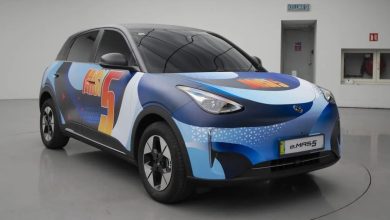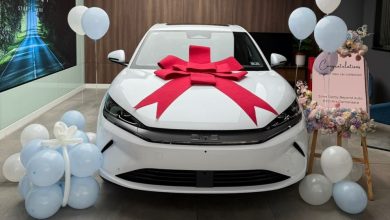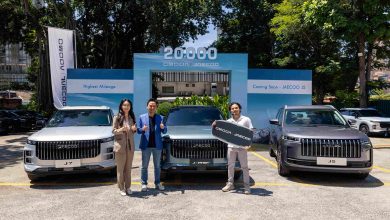Stellantis Reveals Electrification Plan For All 14 Of Its Brands
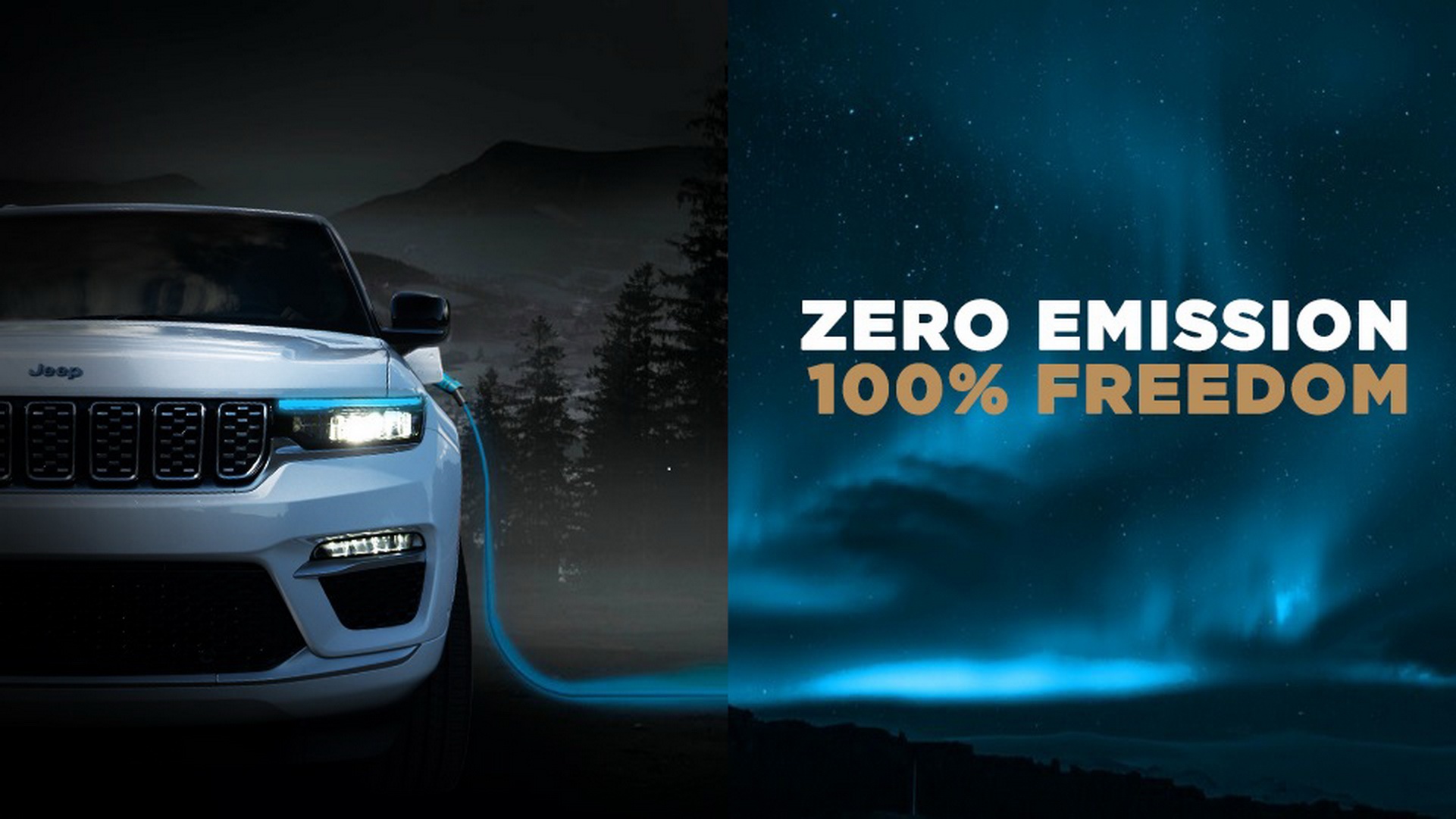
A preview of what is to come for all 14 brands under the Stellantis umbrella in the electrified future.
Stellantis has recently held what it dubs to be its EV Day 2021, and during it had set the auto world abuzz with a sweeping range of announcements in regards to its electrification endeavours.
Seeing however that the world’s fourth largest auto group has 14 brands under its massive corporate umbrella, there is really a lot of news to get through. So just to keep everything concise, below instead therefore is the highlight reel of what people should get excited for in Stellantis’ electrified future.
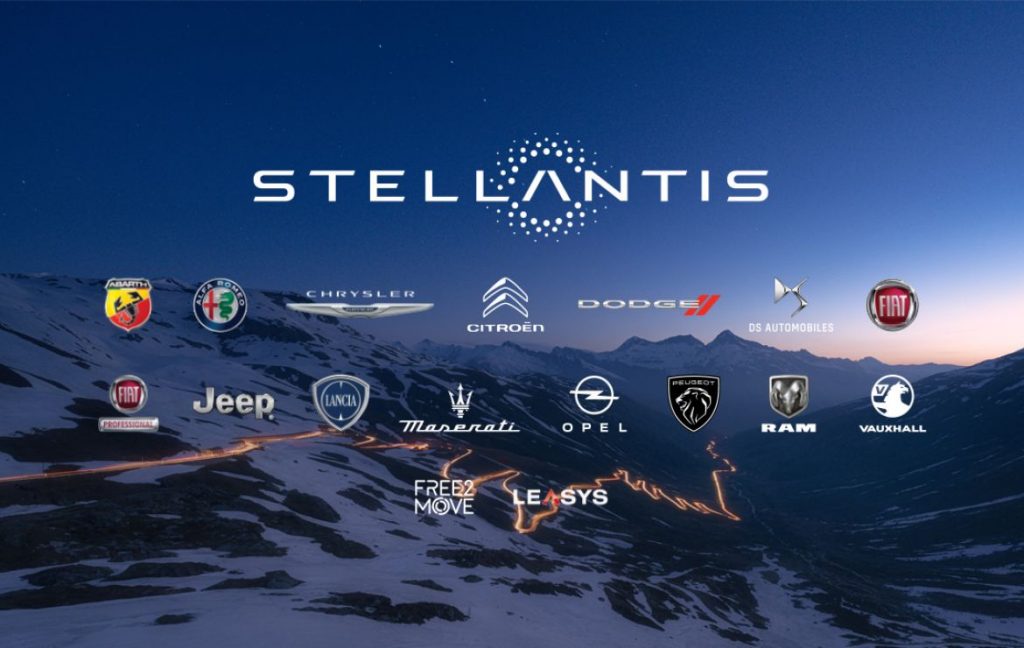
Kicking things off with the auto group as a whole first, Stellantis is targeting for over 70% of sales in Europe and over 40% in the United States to be low-emission vehicles (LEV) by 2030. To that end then, it is planning to invest over €30 billion (RM 150 billion) through 2025 in electrification and software development to achieve this goal.
Most of this investment will go into funding the development of its new modular BEV-centric modular platforms. Of which there are four main varieties to be shared among its 14 brands: STLA Small, Medium, Large and Frame.
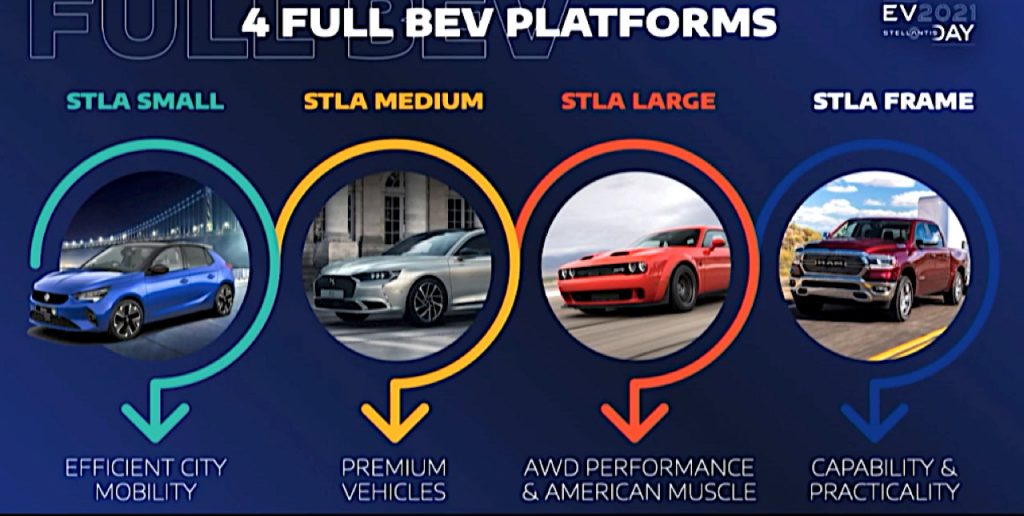
Paired a family of three electric drive modules (that combines the motor, gearbox and inverter into a single unit) and powered by either a high energy-density or nickel cobalt-free batteries come 2024, Stellantis is touting that cars based on these new STLA platforms are to be capable of offering from between 500 km to 800 km of all-electric range on a single charge depending on application. Class-leading fast charging capability of 32 km per minute is also on the cards too, as well as the now industry-standard over-the-air update functionality.
Taking a tangent and touching more on the battery tech Stellantis is developing meanwhile, the auto group has targeted to secure the over 260 GWh of battery capacity by 2030 through five gigafactories located between Europe and North America. It is also targeting the reduction in EV battery costs by 60% come the end of the decade, in addition to the highly ambitious plan of introducing solid state battery tech by 2026.
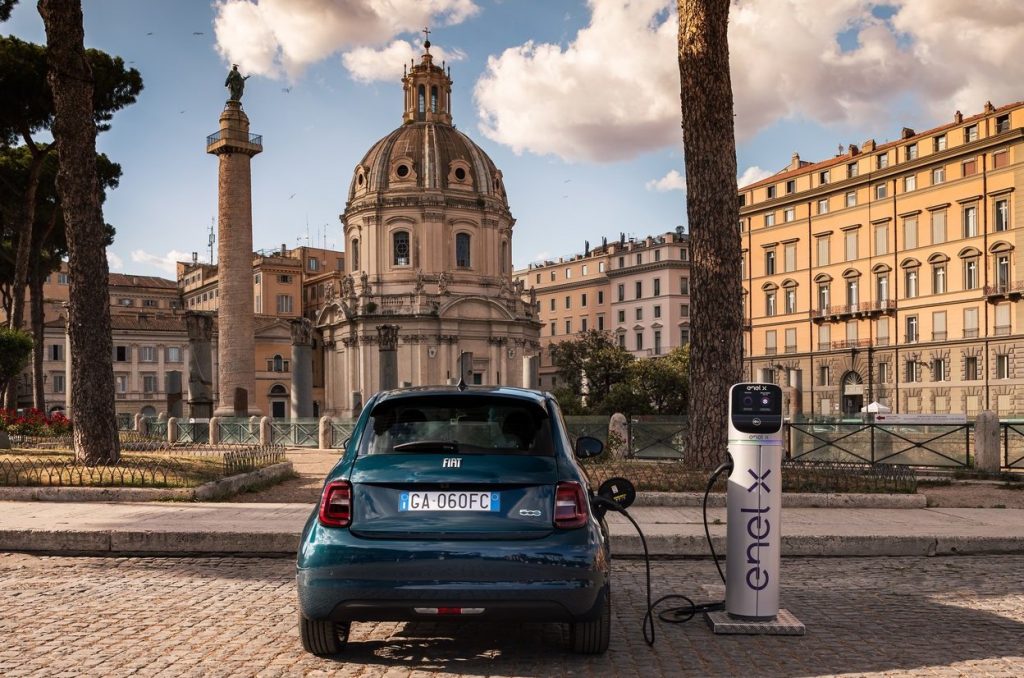
Moving onto the more headline grabbing stories and discussing what each of its brands will be debuting in the future however, the big news garnering all the attention over in North America is the teaser for the new RAM 1500 BEV pickup truck. Set to debut in 2024, this all-electric pickup will be the one setting the stage for the American automaker to transition in offering an electrified variant for each of its models come 2030.
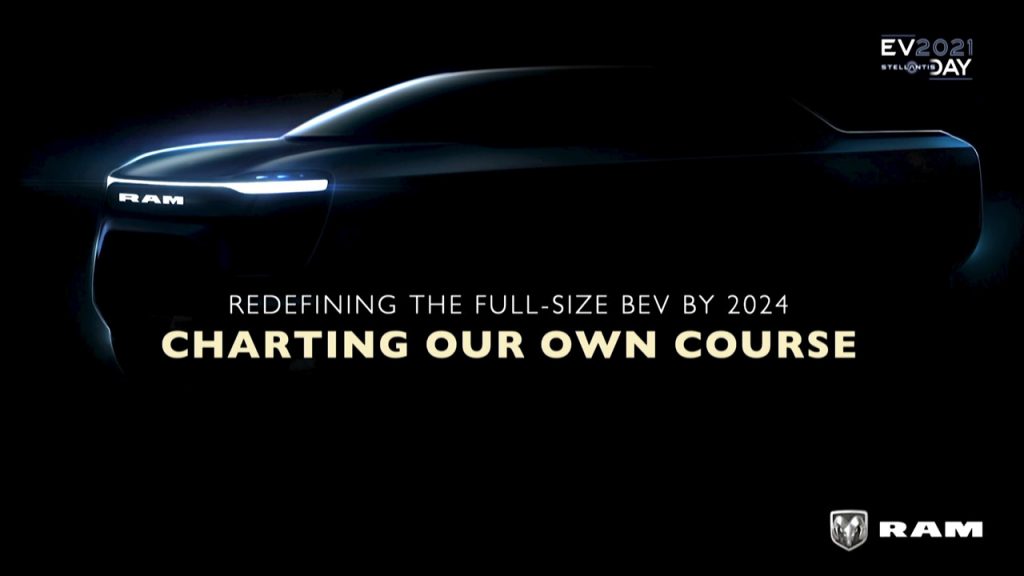
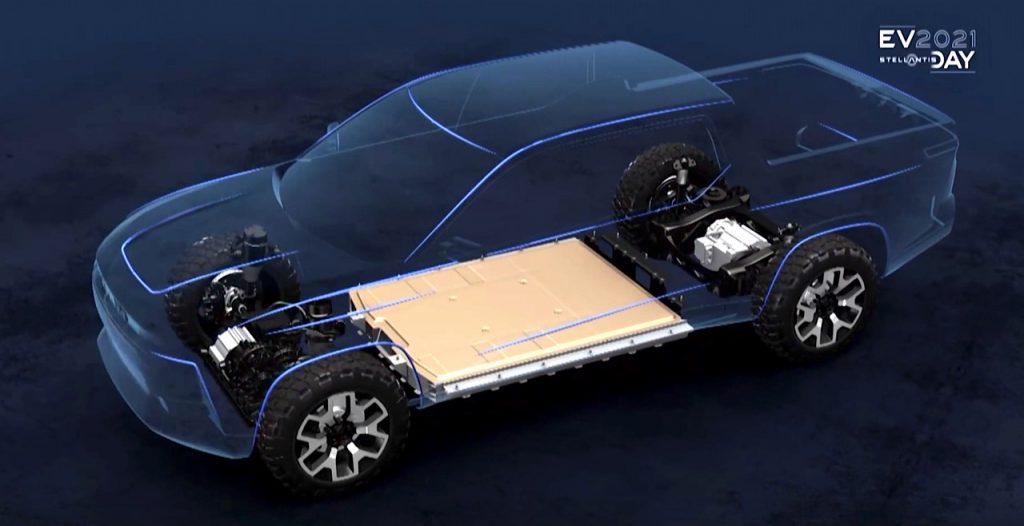
Come 2024 too will herald the arrival of a new all-electric muscle car from Dodge. Further details on this debut model for its eMuscle program is unfortunately still thin on the ground at the present moment, but the teaser released does show it to likely feature styling cues that are inspired by the Charger and Challenger of the 70s. Considering also that it was shown doing a four-wheel burnout, it is expected for it to feature at least one motor on each axle.
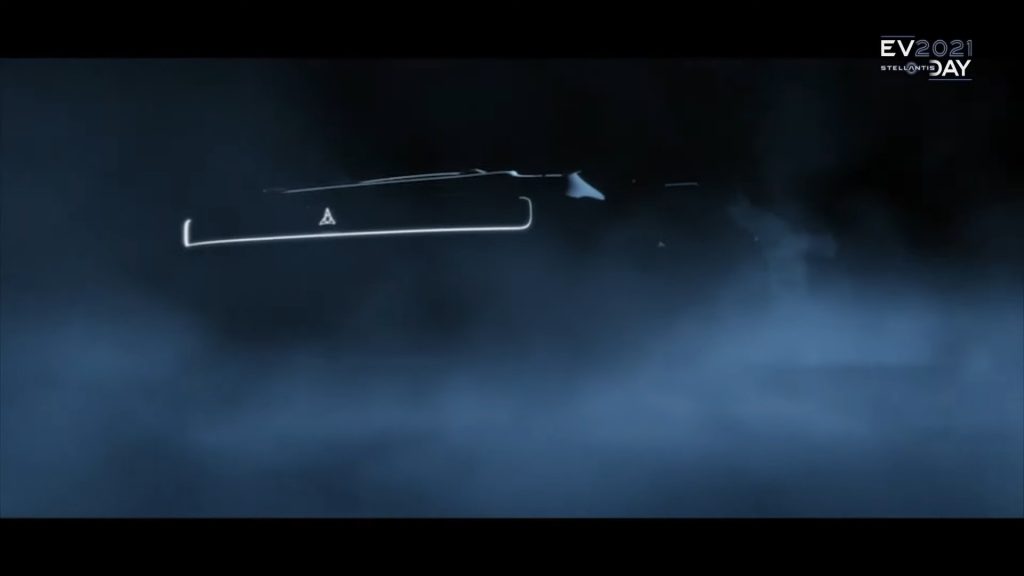
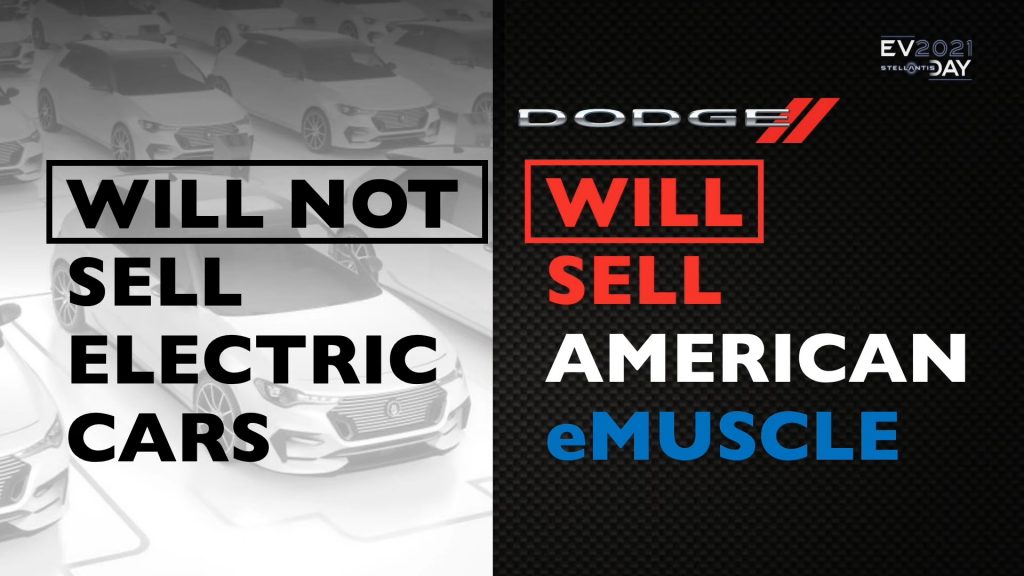
Continuing swiftly on to Jeep, the American SUV manufacturer had used the EV day to announce the launch of its new PHEV Grand Cherokee 4xe. It also had pledged to have a 4xe plug-in hybrid variant for its entire lineup by 2025, with teasers of what seems to be autonomous off-roading tech that is planned to be introduced by the end of this decade.
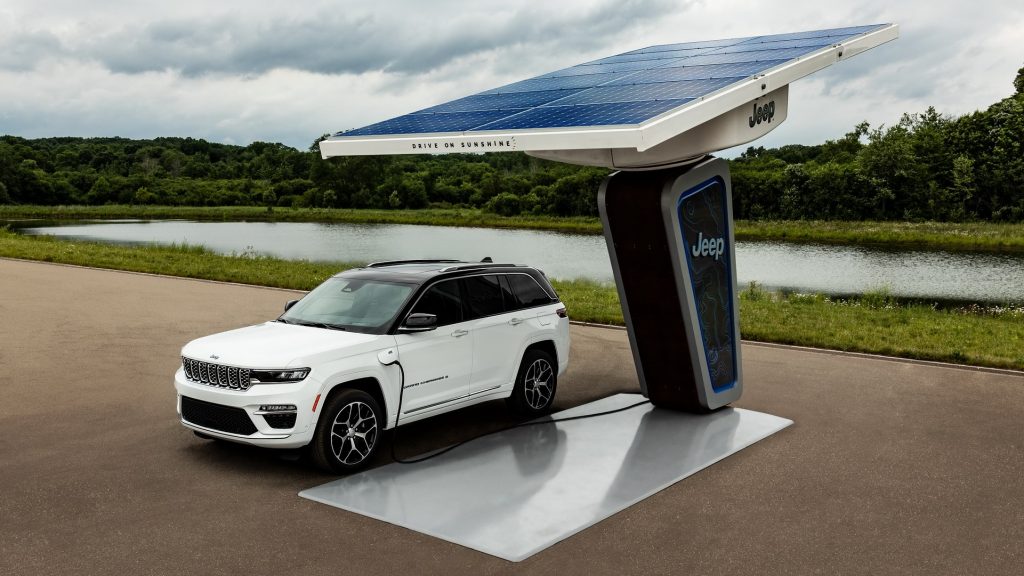
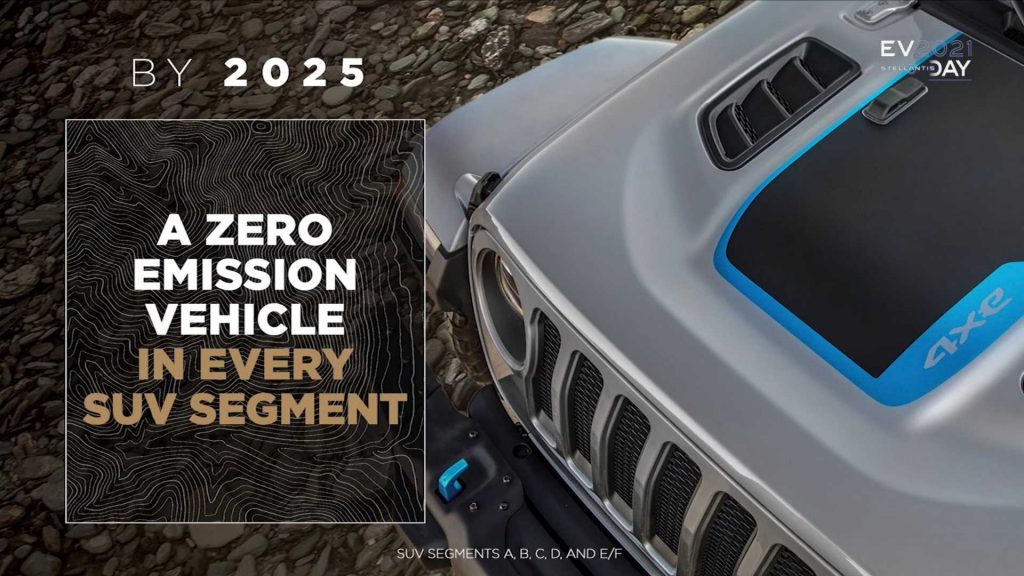
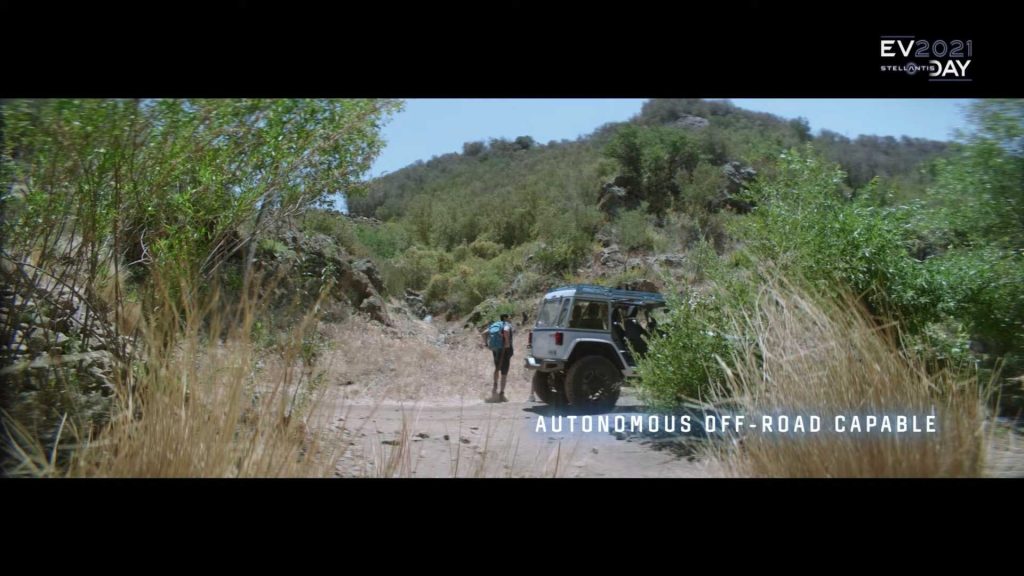
Jeep however won’t be the only one within the North American Stellantis family to be offering electrified SUVs, as Chrysler has rather surprisingly shown off a rather sleek all-electric crossover too. Looking rather similar to a Jaguar i-Pace, the only concrete information on this as-yet-unnamed model is that it will likely be riding on the STLA Large platform and feature up to 6 screens within its airy interior.

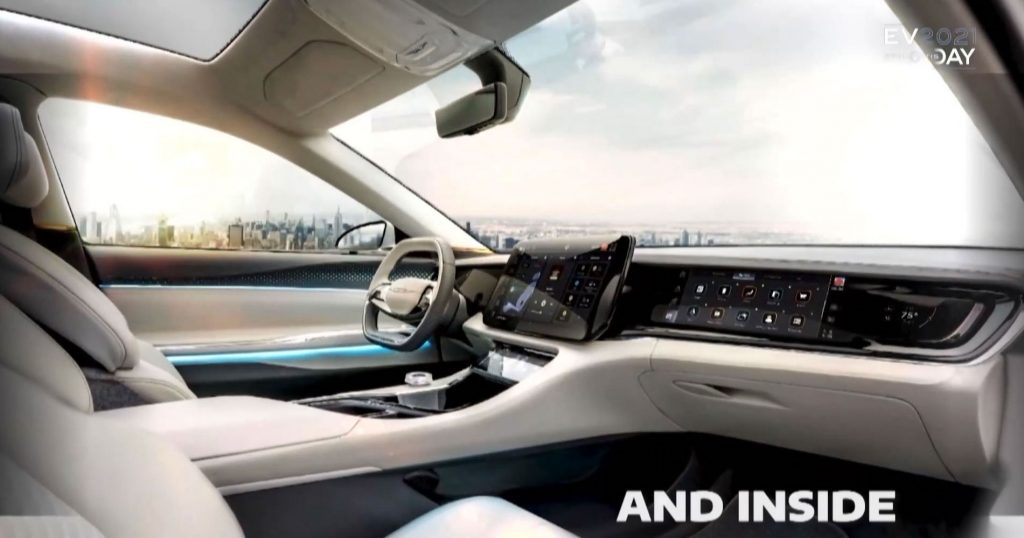
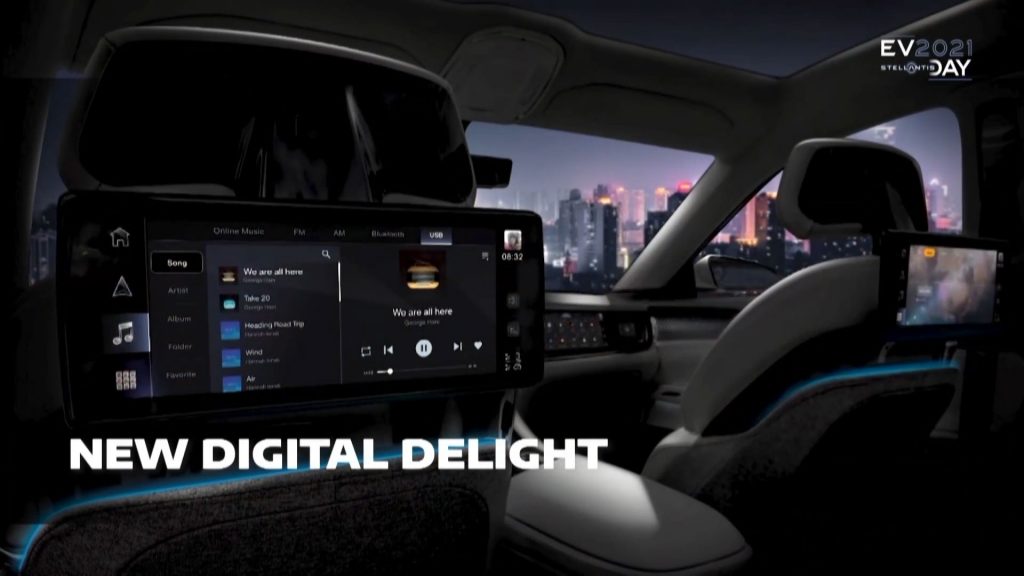
Now turning towards the European brands under the Stellantis umbrella, the big news across the pond will be from Opel and Vauxhall and its announcement to transition towards being an all-electric automaker by 2028. The former firm too has made headlines with the revelation that it will be reviving the Manta moniker for an upcoming EV that is set to launch in 2025, but it unfortunately will be the name of an altogether more crossover-type vehicle instead of the restomod coupe it had previously teased.
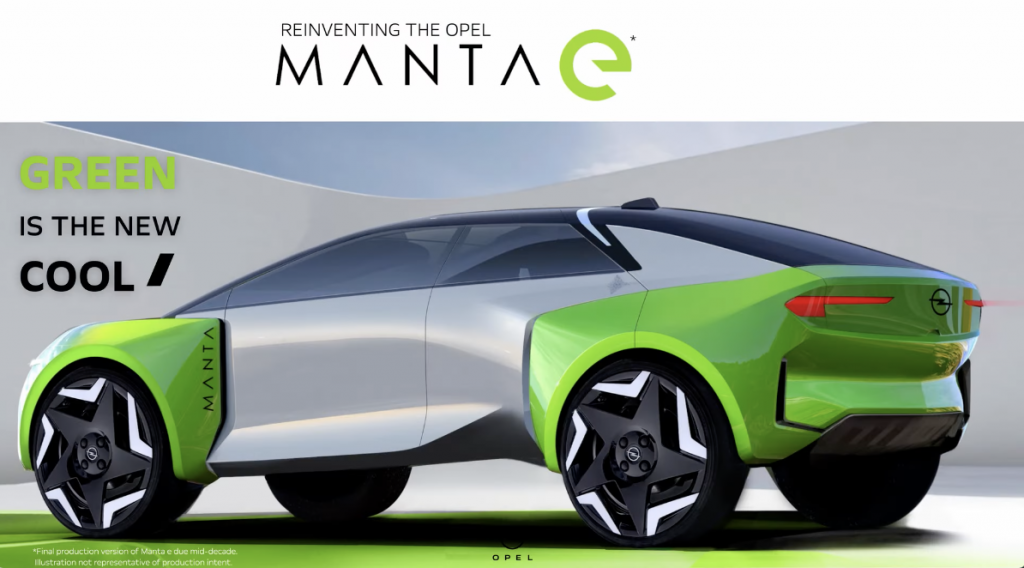
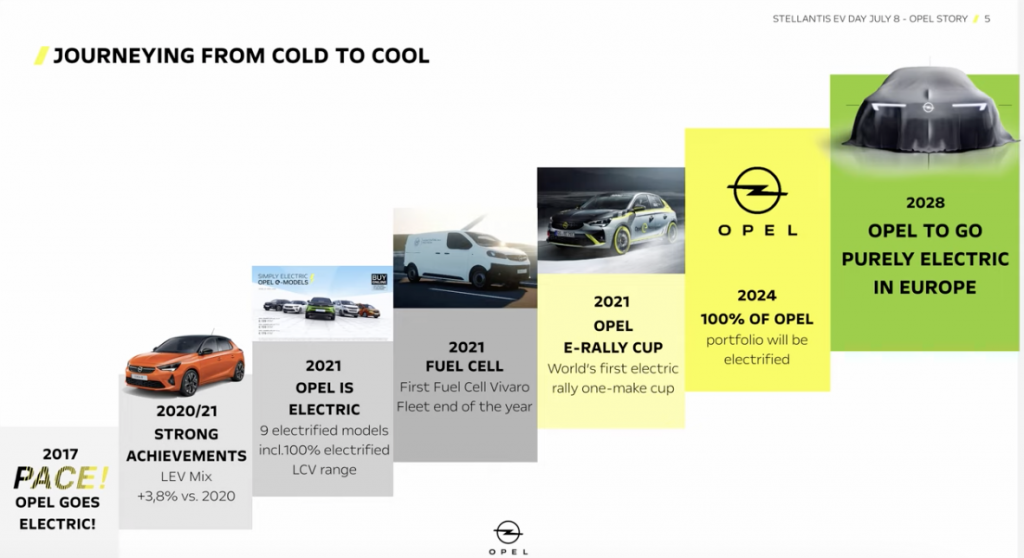
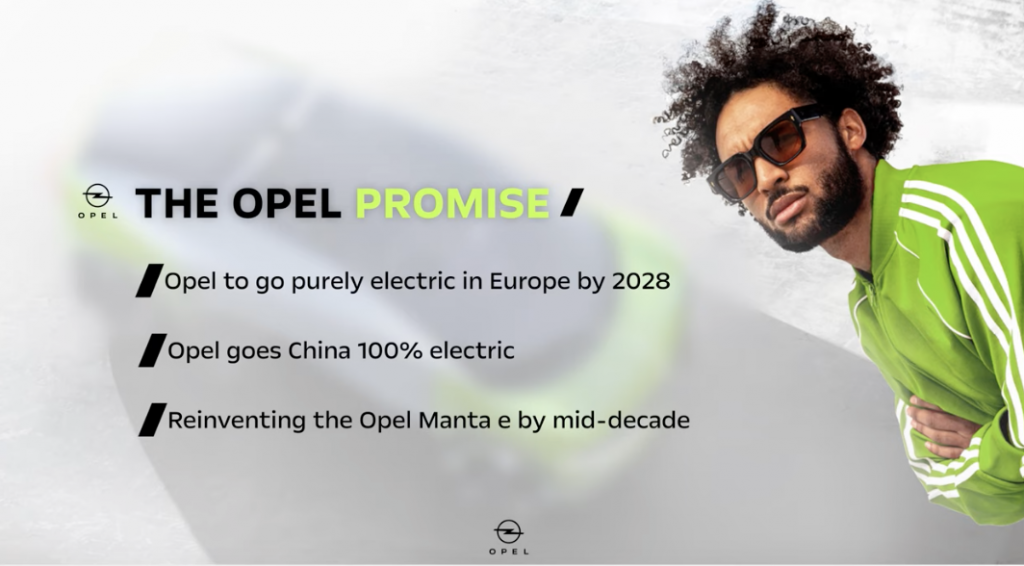
As for the rest of the Euro marques on the other hand, there has not been much brand-specific news announced during the Stellantis EV day celebration. Peugeot however has reiterated its commitment to accelerate its electrified sales, and pledges to an all-electric lineup by 2025.
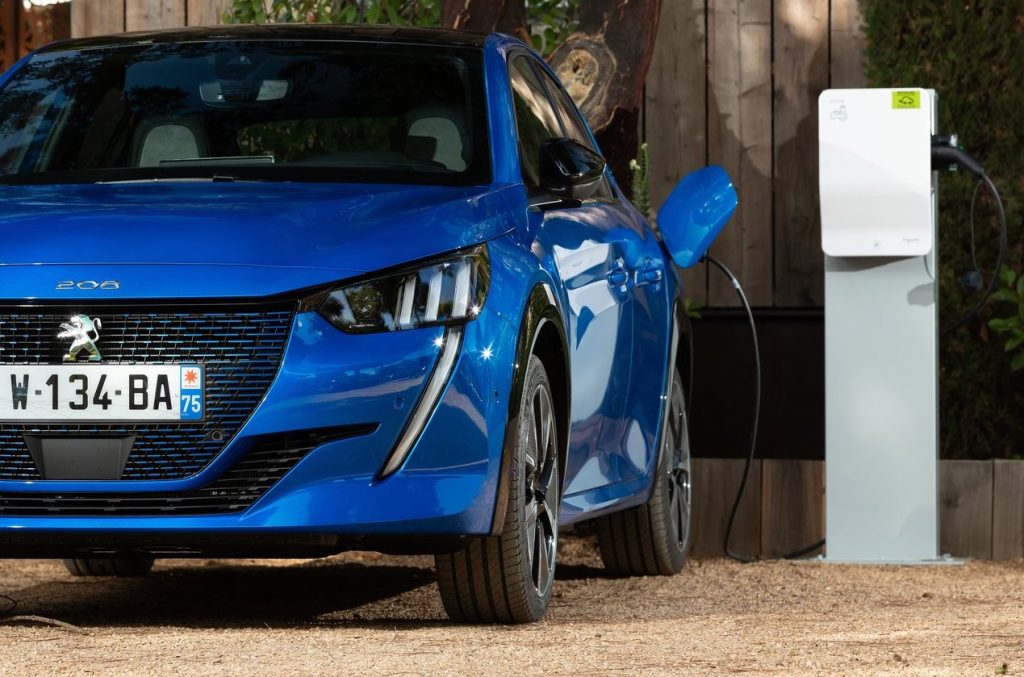
Fiat has also previously announced its intentions to switch in becoming an all-electric automaker by 2030, with a new dedicated EV to come in 2024. Alfa Romeo is possibly teasing an electrification transition around the same time too, if its new “From 2024, Alfa Becomes Alfa e-Romeo” slogan is anything to go by at least.
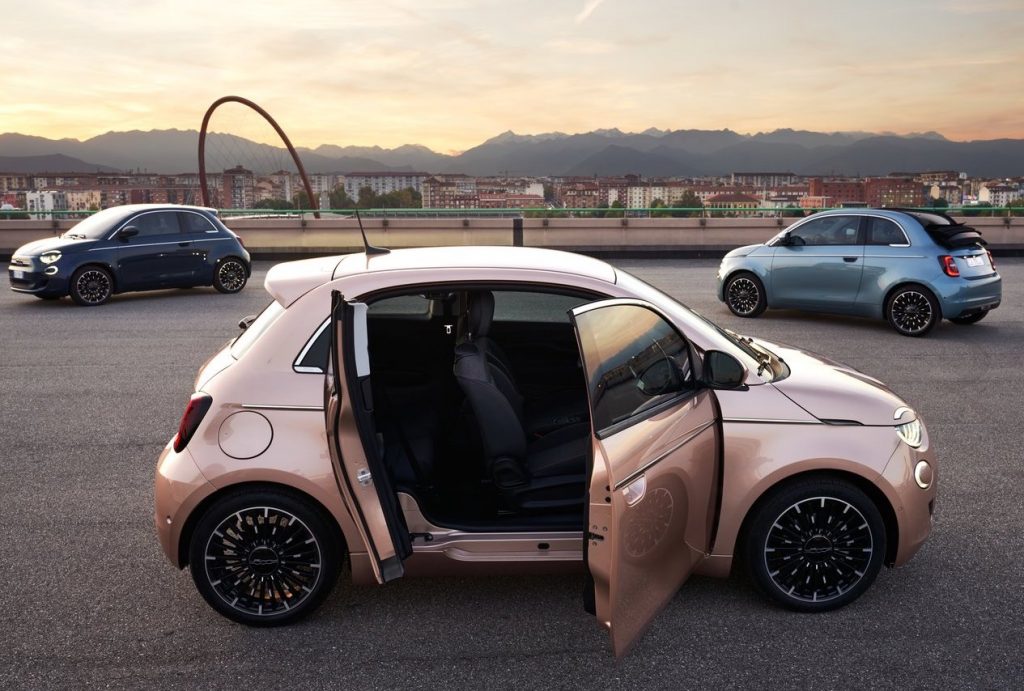
And while on the topic of slogans, here are the new (rather tacky) taglines that Stellantis have revealed for each of its brands to encapsulate their electrification ambitions:
- Abarth – “Heating Up People, But Not the Planet”
- Alfa Romeo – “From 2024, Alfa Becomes Alfa e-Romeo”
- Chrysler – “Clean Technology for a New Generation of Families”
- Citroën – “Citroën Electric: Well-Being for All!”
- Dodge – “Tear Up the Streets… Not the Planet”
- DS Automobiles – “The Art of Travel, Magnified”
- Fiat – “It’s Only Green When It’s Green for All”
- Jeep – “Zero Emission Freedom”
- Lancia – “The Most Elegant Way to Protect the Planet”
- Maserati – “The Best in Performance Luxury, Electrified”
- Opel/Vauxhall – “Green is the New Cool”
- Peugeot – “Turning Sustainable Mobility into Quality Time”
- Ram – “Built to Serve a Sustainable Planet”
- Commercial Vehicles – “The Global Leader in e-Commercial Vehicles”
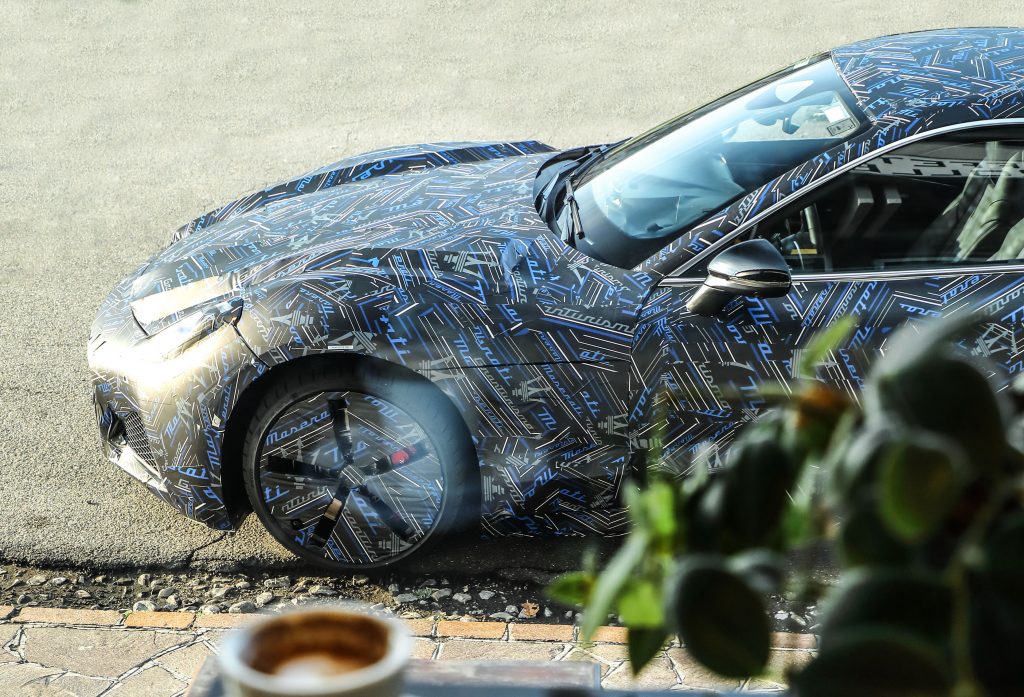
PRESS RELEASE: Today, Stellantis N.V. presented a comprehensive electrification strategy that delivers exciting, class-leading vehicles for the company’s iconic brands, while leveraging in-house expertise, partnerships and joint ventures to deliver advanced technology at affordable prices. This strategy will allow the company to target sustainable, double-digit adjusted operating income margins in the mid-term.
“The customer is always at the heart of Stellantis and our commitment with this €30 billion plus investment plan is to offer iconic vehicles that have the performance, capability, style, comfort and electric range that fit seamlessly into their daily lives,” said Carlos Tavares, Chief Executive Officer, Stellantis. “The strategy we laid out today focuses the right amount of investment on the right technology to reach the market at the right time, ensuring that Stellantis powers the freedom of movement in the most efficient, affordable and sustainable way.”
Financial Performance
Stellantis plans to achieve increased profitability in the coming years. This will be supported by the execution of the synergy opportunities arising from the formation of Stellantis, with a forecast of annual cash synergies of more than €5 billion at steady state, the roadmap of battery cost reductions, and the continued optimization of distribution and production costs and realization of new revenue streams, in particular from connected services and future software business models.
As a result, Stellantis is targeting to achieve sustainable, double-digit adjusted operating income margins in the mid-term (~2026), making the company a benchmark in profitability in the provision of electrified mobility to customers on a global basis.
Stellantis intends to become the market leader in low-emission vehicles (LEVs). Through 2030, Stellantis’ LEV mix for passenger cars in Europe is targeted to steadily grow to over 70% – 10 percentage points ahead of current industry assumptions for overall market mix. In the U.S., Stellantis’ LEV mix for passenger cars and light-duty trucks is expected to be more than 40% by 2030.
To execute this strategy, Stellantis plans to invest more than €30 billion through 2025 in electrification and software development, including equity investments made in joint ventures to fund their activities, while targeting to continue to be 30% more efficient than the industry with respect to total Capex and R&D spend versus revenues.
The company remains committed to growing its commercial vehicle leadership in Europe and strengthening its position in North America while aiming to be the global leader in e-commercial vehicles. Leveraging knowledge and embracing synergies, the commercial vehicle electrification rollout will extend to all products and all regions over the next three years, including the delivery of hydrogen fuel cell medium vans by the end of 2021.
The Stellantis electrification roadmap encompasses the entire value chain. The company’s EV battery sourcing strategy is to secure more than 130 gigawatt hours (GWh) of capacity by 2025 and more than 260 GWh by 2030. The EV battery and component needs will be met with a total of five “gigafactories” in Europe and North America, completed with additional supply contracts and partnerships to support total demand.
Stellantis has signed memorandums of understanding (MOUs) with two lithium geothermal brine process partners in North America and Europe to ensure a sustainable supply of lithium, identified as the most critical battery raw material with regard to availability, as well as have the ability to integrate lithium into the supply chain once available.
In addition to sourcing strategies, Stellantis’ technical expertise and manufacturing synergies will drive battery costs lower. Electric vehicle battery pack costs are targeted to be reduced by more than 40% from 2020 to 2024 and by more than an additional 20% by 2030. All aspects of the battery pack play a role in reducing the costs – optimizing the overall pack, simplifying the format of the modules, increasing the size of the battery cells and upgrading the battery chemistry.
The company intends to maximize the full value of the battery life cycle through repair, remanufacturing, second-life use and recycling, as well as ensure a sustainable system that prioritizes customer needs and environmental concerns.
Customer Focused
Affordability is a priority at Stellantis, as the company is targeting for the total cost of ownership of EVs to be equivalent to internal combustion engine vehicles by 2026.
Electrification is not a “one size fits all” plan at Stellantis. Each of the company’s 14 iconic brands is committed to offering best-in-class fully electrified solutions and doing so in a way that enhances the DNA of each brand. Stellantis revealed the following statements expressing the electrification approach of each brand:
- Abarth – “Heating Up People, But Not the Planet”
- Alfa Romeo – “From 2024, Alfa Becomes Alfa e-Romeo”
- Chrysler – “Clean Technology for a New Generation of Families”
- Citroën – “Citroën Electric: Well-Being for All!”
- Dodge – “Tear Up the Streets… Not the Planet”
- DS Automobiles – “The Art of Travel, Magnified”
- Fiat – “It’s Only Green When It’s Green for All”
- Jeep® – “Zero Emission Freedom”
- Lancia – “The Most Elegant Way to Protect the Planet”
- Maserati – “The Best in Performance Luxury, Electrified”
- Opel/Vauxhall – “Green is the New Cool”
- Peugeot – “Turning Sustainable Mobility into Quality Time”
- Ram – “Built to Serve a Sustainable Planet”
- Commercial Vehicles – “The Global Leader in e-Commercial Vehicles”
Driving range and rapid recharges are key to widespread consumer acceptance of BEVs. Stellantis meets this challenge with BEVs that will deliver ranges between 300-500 miles (500-800 km) and with class-leading fast charging capability of 20 miles (32 km) per minute.
Stellantis will offer a full suite of solutions for private, business and fleet customers that help simplify the ownership journey. Efforts will include providing day-to-day smart charging offers using green energy sources, tapping into existing partnerships to expand charging options and accelerating smart grid use.
The company intends to meet the demands of its varied customers by supporting the development of fast charging networks across Europe, enabled by an MOU signed between Free2Move eSolutions and Engie EPS. The intention is to mimic Free2Move eSolutions’ business model for the North American market.
Smart Technology Enablers
Four BEV-centric platforms are the backbone of the electrified vehicles from Stellantis brands. The platforms are designed with a high level of flexibility (length and width) and component sharing, delivering economies of scale as each platform can support production of up to 2 million units per year.
The four platforms are:
- STLA Small, with a range up to 300 miles (500 kilometers)
- STLA Medium, with a range up to 440 miles (700 kilometers)
- STLA Large, with a range up to 500 miles (800 kilometers)
- STLA Frame, with a range up to 500 miles (800 kilometers)
Propulsion includes a family of three electric drive modules (EDM) that combine the motor, gearbox and inverter. These EDMs are compact, flexible and can be easily scaled. The EDMs can be configured for front-drive, rear-drive, all-wheel drive and 4xe.
The combination of the platforms, EDMs and high energy-density battery packs will deliver vehicles with best-in-class performance in efficiency, range and recharging.
A program of hardware upgrades and over-the-air software updates will extend the life of the platforms well into the next decade. Stellantis will develop software and controls in-house to maintain the characteristics unique to each brand.
Battery packs will be tailored for a variety of vehicles – from smaller city cars to energy-dense packs for performance vehicles and trucks. Use of two battery chemistries is planned by 2024 to support various customer needs: a high energy-density option and a nickel cobalt-free alternative. By 2026, the first competitive solid state battery technology is targeted to be introduced.
Stellantis currently has or is completing several key technology joint ventures, ranging from e-powertrain and e-transmission operations to battery cell chemistry and production and digital cockpit and personalized connected services. These partnerships provide Stellantis the opportunity to leverage not only in-house competencies, but also the expertise of the partners in order to bring new technology and solutions to market more rapidly, while optimizing capital allocation to further enhance Stellantis’ competitiveness in the marketplace.
“Our electrification journey is quite possibly the most important brick to lay as we start to reveal the future of Stellantis just six months after its birth, and now the entire company is in full execution mode to exceed every customer’s expectations and accelerate our role in redefining the way the world moves,” said Tavares. “We have the scale, the skills, the spirit and the sustainability to achieve double-digit adjusted operating income margins, lead the industry with benchmark efficiencies and deliver electrified vehicles that ignite passion.”

